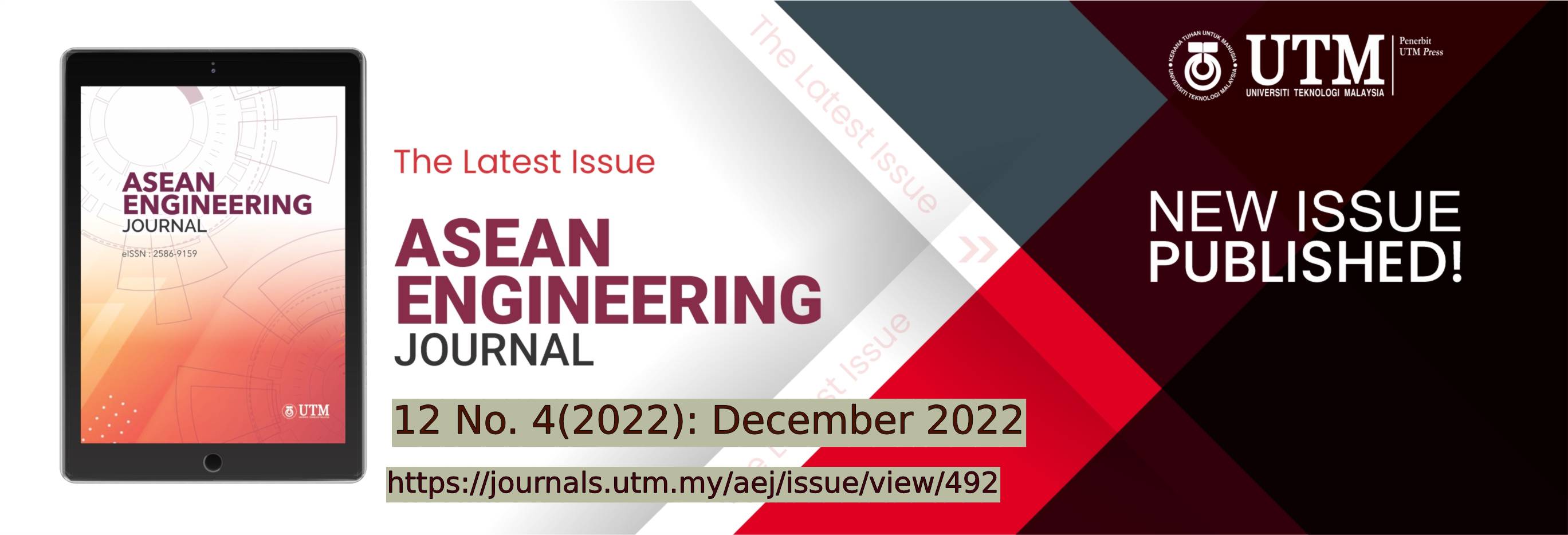STRESS ANALYSIS OF TEETH, PERIODONTAL TISSUES, AND MAXILLA BONES DUE TO BRUXISM
DOI:
https://doi.org/10.11113/aej.v12.17735Keywords:
Bruxism modeling, 3D reconstruction and modeling of jaw, Finite element analysis, Stress analysisAbstract
This paper investigates the stress distribution on the teeth and jaw during bruxism that may provide additional insights to the consequences of bruxism, splint design considerations, a basis for possible therapy protocols, and a baseline for future bruxism studies. A three-dimensional (3D) solid model of a complete jaw comprised of teeth, periodontal ligaments, and maxilla bone is reconstructed based on a Cone Beam Computed Tomography (CBCT) scan of a patient. A finite element model of the jaw is then constructed using the geometry imported from the solid model that has been reworked to remove imperfections during reconstruction and to allow proper contact between teeth. A linear elastic finite element analyses were then performed to simulate the bruxism phenomenon which includes biting and grinding. Numerical analysis is conducted only to the maxilla, with forces are placed on the teeth’s surface where contact occurs. The analysis is conducted for all stages of bruxism and possible movements patterns. Results suggest that high stresses occur during grinding, indicating a strong correlation between bruxism and dental issues such as tooth wear and alveolar resorption.
References
von Piekartz, H., Rösner, C., Batz, A., Hall, T., and Ballenberger, N. 2020. Bruxism, temporomandibular dysfunction and cervical impairments in females–Results from an observational study. Musculoskeletal Science and Practice. 45: 102073. DOI: https://doi.org/10.1016/j.msksp.2019.102073
Rupprecht R. 2004. Trauma from occlusion: a review. Clinical Update. 26: 3
Sugimoto, K., Yoshimi, H., Sasaguri, K., and Sato, S. 2011. Occlusion factors influencing the magnitude of sleep bruxism activity. CRANIO®. 29(2): 127-137. DOI: https://doi.org/10.1179/crn.2011.021
Hathaway, K. M. 1995. Bruxism: definition, measurement, and treatment. Advance in pain research and therapy. 21: 375-386.
Komiyama, O., Lobbezoo, F., De Laat, A., Iida, T., Kitagawa, T., Murakami, H., Kato, K., and Kawara, M. 2012. Clinical management of implant prostheses in patients with bruxism. International Journal Of Biomaterials. DOI: https://doi.org/10.1155/2012/369063
Gümüş, H. Ö., Kılınç, H. İ., Tuna, S. H., and Özcan, N. 2013. Computerized analysis of occlusal contacts in bruxism patients treated with occlusal splint therapy. The journal of advanced prosthodontics. 5(3): 256-261. DOI: https://doi.org/10.4047/jap.2013.5.3.256
Johansson, A., Omar, R., and Carlsson, G. E. 2011. Bruxism and prosthetic treatment: a critical review. Journal of prosthodontic research. 55(3): 127-136. DOI: https://doi.org/10.1016/j.jpor.2011.02.004
Shetty, S., Pitti, V., Satish Babu, C. L., Surendra Kumar, G. P., and Deepthi, B. C. 2010. Bruxism: a literature review. The Journal of Indian Prosthodontic Society. 10(3): 141-148. DOI: https://doi.org/10.1007/s13191-011-0041-5
Bender, S. D. 2009. Occlusion, Function, and Parafunction: Understanding the Dynamics of a Healthy Stomatagnathic System. ADA CERP.
Barrientos, E., Pelayo, F., Tanaka, E., Lamela-Rey, M. J., Fernández-Canteli, A., and de Vicente, J. C. 2020. Effects of loading direction in prolonged clenching on stress distribution in the temporomandibular joint. Journal of the Mechanical Behavior of Biomedical Materials. 112: 104029. DOI: https://doi.org/10.1016/j.jmbbm.2020.104029
Del Palomar, A. P., and Doblare, M. 2006. Finite element analysis of the temporomandibular joint during lateral excursions of the mandible. Journal of biomechanics. 39(12): 2153-2163. DOI: https://doi.org/10.1016/j.jbiomech.2005.06.020
Zhang, L., Wang, Z., Chen, J., Zhou, W., and Zhang, S. 2010. Probabilistic fatigue analysis of all-ceramic crowns based on the finite element method. Journal of biomechanics. 43(12): 2321-2326. DOI: https://doi.org/10.1016/j.jbiomech.2010.04.030
Marcián, P., Borák, L., Valášek, J., Kaiser, J., Florian, Z., and Wolff, J. 2014. Finite element analysis of dental implant loading on atrophic and non-atrophic cancellous and cortical mandibular bone–a feasibility study. Journal of biomechanics. 47(16): 3830-3836. DOI: https://doi.org/10.1016/j.jbiomech.2014.10.019
Bălăcel, E., Lăcătuşu, Ş., Topoliceanu, C., Bălăcel, I., Iovan, G., and Ghiorghe, A. 2011. Mathematics model analysis of biomechanical behaviour of three dental materials to loading related to bruxism. Romanian Journal of Oral Rehabilitation. 3(3): 26.
Larson, T. D. 2012. The effect of occlusal forces on restorations. Northwest Dentistry. 91(6): 25-7.
Budiaman, A. S., Dirgantara, T., Miranda, A., Mihradi, S., and Mahyuddin, A. I. 2015, September. Numerical Analysis on Stress Distribution of Teeth and Periodontal Tissues due to Bruxism (GS1: Cell and Tissue Biomechanics VI). In The Proceedings Of The Asian Pacific Conference On Biomechanics: Emerging Science And Technology In Biomechanics. 139. DOI: https://doi.org/10.1299/jsmeapbio.2015.8.139
Chaichanasiri, M., Nanakorn, P., and Tharanon, W. (2009). Finite element analysis of bone around a dental implant supporting a crown with a premature contact. J Med Assoc Thai. 92(10): 1336-44.
Sharmila, H. 2004. Textbook of dental materials. India: Gopsons Paper Ltd Noida.
Black, J., and Hastings, G. 2013. Handbook of biomaterial properties. Springer Science & Business Media.
Wijaya, Y., Himawan, L. S., and Odang, R. W. 2013. Occlusal grinding pattern during sleep bruxism and temporomandibular disorder. Journal of Dentistry Indonesia. 20(2): 25-31.
Dean, R. 2017. The periodontal ligament: development, anatomy and function. Oral Health Dental Management. 16(6): 1-7
















